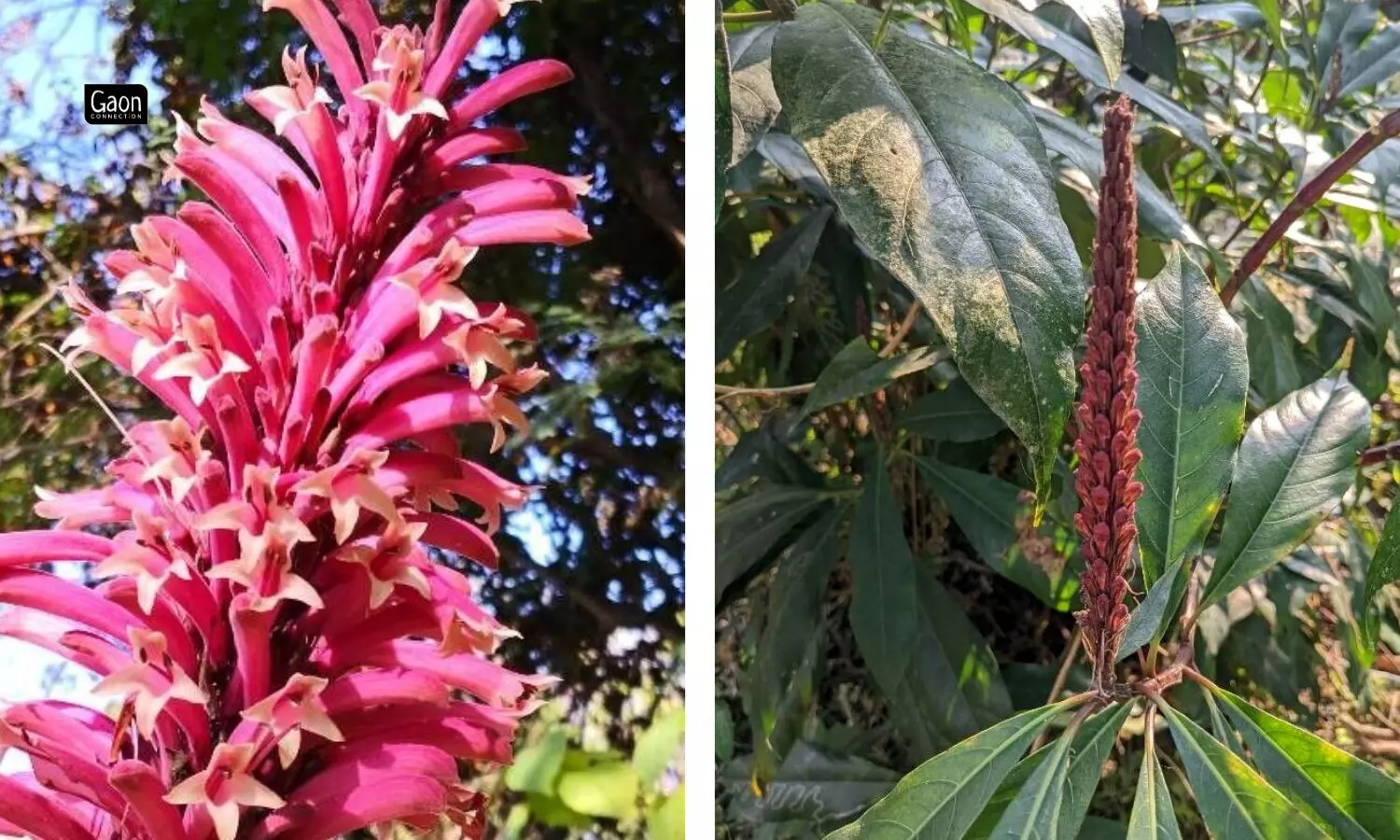Every time someone in my family coughs, it is as if my beloved Aita (grandmother), who is no more, whispers into my ears urging me to make khud saulere masor tita, a dish made with fish, broken rice and the all important tita phool (bitter flower).
I remember her bustling about her kitchen taking out the sundried flowers and other ingredients to make it. To let you into a little secret, I loathed the dish which to my undeveloped taste buds was unappetisingly slimy, but I watched fascinated as she whipped it up, telling me why it was a very important thing to learn to make.
Many years later, though I know the recipe and the proportions and everything, I still cannot recreate what she made. I find myself swallowing hard as I walk through the Sunday markets and spot the bahak tita leaves, the main ingredient in the dish, and think of Aita.
According to the International Journal of Life Science Scientific Research, this plant (Phlogacanthus Nees) has about 49 species that are scattered in South East Asia, and the most common one found in Assam is the Bahak Tita or the beautiful red Tita Phool. Every part of the Tita Phool tree is medicinal and widely used as a cure for cough, congestion, chronic bronchitis, asthma and rheumatism.

(Phlogacanthus Nees) has about 49 species that are scattered in South East Asia, and the most common one found in Assam is the Bahak Tita or the beautiful red Tita Phool.
Where I come from the tender leaves of this plant is a common cure for cough. The leaves are either boiled in water to gargle or ground into a paste to extract the juice. It is believed that the raw juice of Bahak Tita leaves can cure even a 100-day old cough and is an excellent remedy for asthma or bronchitis. The bark and stems of this plant are hung in cowsheds as they keep pests away.
Also Read: Fasting and Feasting on Chhath
The tita phool is also stir fried with other vegetables, made into bora or fritters or used in my Aita’s dish cooked with small fish. It has antibacterial properties and boosts immunity.
Aita, like many of her wise generation, firmly believed that one should eat foods that have antibacterial properties especially when seasons change. This would help the body adapt and protect it from common cold or cough. Aita would pick such ingredients, clean them and store them for future use. It was bahak tita during the springs and sewali phool or Night Jasmine in the autumns. Both flowers are bitter in taste and known for their antibacterial and immunity boosting properties.
We had a frugal lifestyle growing up. Nothing was ever discarded, and everything that was brought into the kitchen was used up in one preparation or the other.
So the rice used in Aita’s preparation with tita phool was the remains of the dehusked rice. (The fruits and vegetable peels would go to the cows as fodder, the rice husk fed the chickens or the fish in our pond). The broken rice that remained after dehusking was stored in a container. Sometimes, she made rice flour out of it. But most of it was used with the bitter flower dish she loved to make and feed us.
Also Read: Keeping Cool This Summer With Kambu Koozhu
Once my grandmother passed away and we moved away for higher studies from that sleepy, small town, cows and chickens in our backyard were no longer part of our lifestyle.
But, here is the recipe that still remains.
Ingredients
- A handful of Tita Phool
- Broken rice- 1 cup
- Small fish- 50 grams
- Mustard oil- enough to fry the fishes
- Onion- 1 small size
- Ginger+Garlic paste- 1 teaspoon
- One glass of water
- Chilli- optional
Steps
- Clean the flowers and soak them in water for ten minutes.
- Once soaked, wash them thoroughly to get rid of sand.
- Now squeeze them dry and keep aside.
- Soak the broken rice for 15 minutes too.
- Take a kadai and fry the fish.
- In the same oil, add the sliced onion and fry till they are golden.
- Add the ginger garlic paste and fry till the raw smell is gone.
- Now add the flower, soaked rice, salt and turmeric powder.
- Stir for a few minutes.
- Add water and fishes along with the chillies.
- Bring it to a boil and cover with a lid.
- Cook until the rice softens on low heat.
- Adjust the salt and serve with hot rice.


















